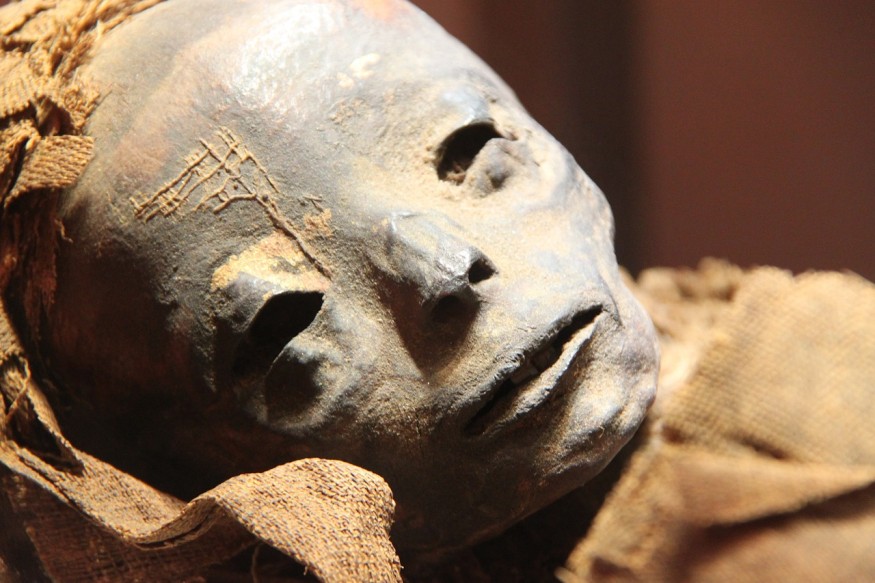
Scientists discovered that the 2,100-year-old mummy from ancient Egypt in a casement adorned with bird figures was a human fetus and not a bird as initially believed. The rare mummified fetus believed to be aged 22 to 24 weeks was also said to have a rare birth defect.
Assumed to Be a Mummified Bird
The mummy was stored at the Maidstone Museum in Kent, England, and was labeled as EA 493 Mummified Hawk, Ptolemaic Period in the inventory.
The erroneous classification of the mummy made sense: its funerary casement was an ideal size for a bird, and the casement bore the head of Horus, the falcon-headed sky god of the Egyptians in gilt and hieroglyphics.
Since mummification of animals was a common practice in ancient Egypt, the mummy did not stand out as unusual or particularly extraordinary.
CHECK THIS OUT: Florida Clams Hold Glass Remnants from Ancient Meteor Strike
The mummy did not even get CT scanned then. In 2016, when the museum decided to CT scan a female mummy and included EA 493 and a few animal mummies in its collection that they discovered that it was not a mummified bird at all.
A Mummified Human Fetus With Anencephaly
The said mummy was CT scanned in 2018.
It was then that researchers discovered something bizarre from the scan and analyses: it contained the remains of a severely malformed human fetus, stillborn and aged to be no later than 28 weeks.
The scan showed it had arms crossed over the chest, causing the researchers to double take that it is not a falcon after all. The scan was not very detailed; thus, museum experts thought it might be a monkey.
When anthropologist Andrew Nelson of Western University in London pulled in a multidisciplinary team to analyze and run a high-resolution micro-CT scan, the team found that the remains belong to a human male fetus aged between 22 and 28 weeks gestation. The results of this research were presented at the World Congress on Mummy Studies in Spain in May 2018.
IN CASE YOU MISSED IT: New Research Solves Ancient Papua New Guinea Mysteries
The research team discovered that the fetus had anencephaly, a rare birth defect in which the baby is born without the brain and skull. According to Nelson, the baby could have been a stillbirth, or it would likely not survive through birth.
The scans revealed that the baby's fingers and toes developed normally, but it had a severe skull deformation leaving the brain practically nonexistent. The baby also had a cleft palate and cleft lip.
"The whole top part of his skull isn't formed. The arches of the vertebrae of his spine haven't closed. His earbones are at the back of his head, " Nelson described.
A Rare Mummified Fetus
The mummified fetus is also rare: there are only eight known mummified fetuses in the world, and this is among them. It is also the second mummified fetus with anencephaly, the first being from 1826.
According to Nelson, how the remains were preserved meant the mummified fetus was regarded as special.
READ NEXT: Dinosaur Stomach Contents Provide Information on Its Herbivorous Nature
In ancient Egypt, fetuses were buried in pots, or beneath house floors. Only six to eight were known to be mummified, which, according to Nelson, meant that this was regarded as an extraordinary individual. The condition of the fetus indicates that the mother lacked folic acid, a vitamin that can help prevent neural defects such as anencephaly.
However, the other items buried with the mummy could provide clues about why the mummified fetus was decorated with bird images that remain a mystery.
© 2025 NatureWorldNews.com All rights reserved. Do not reproduce without permission.





